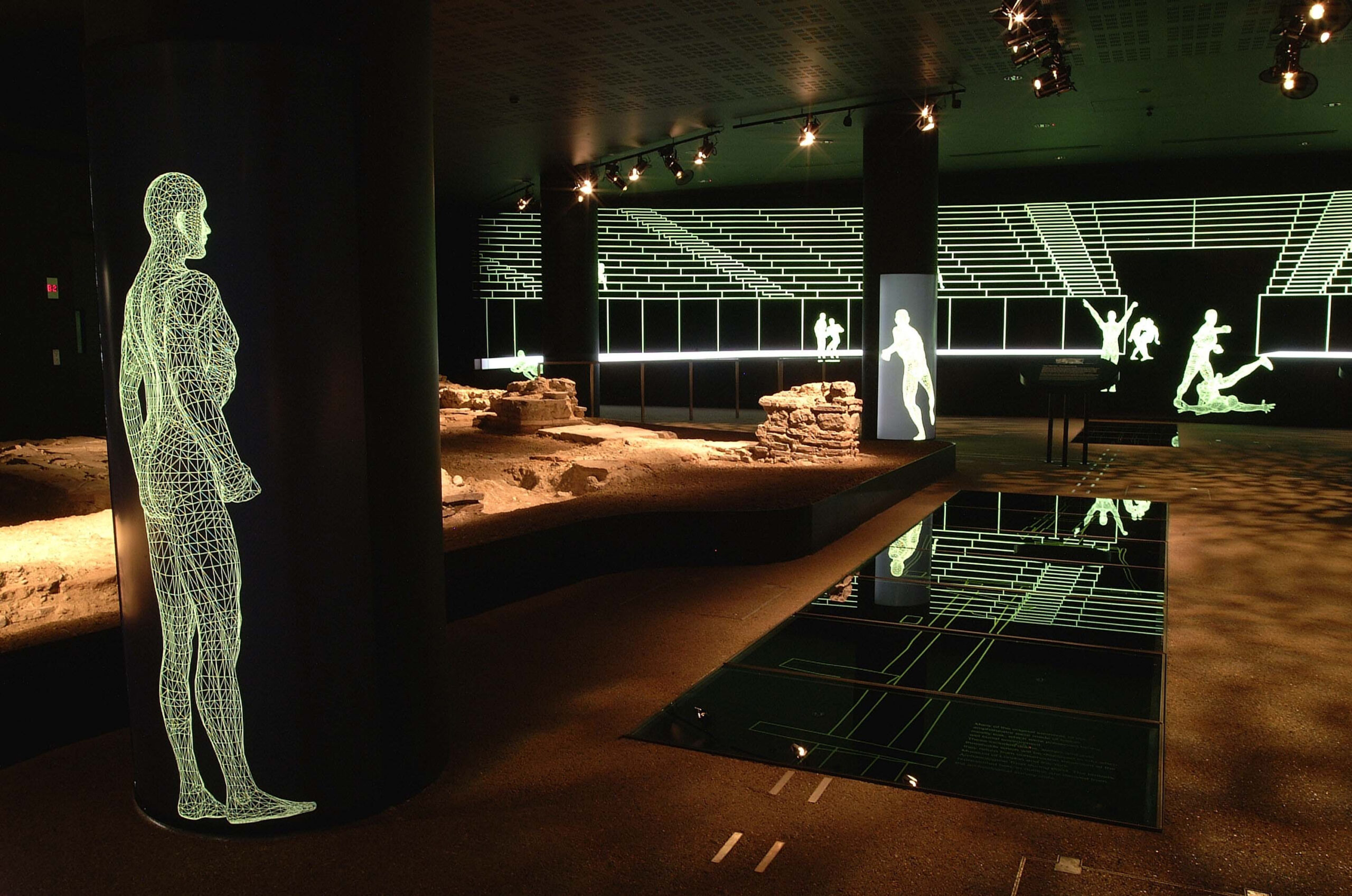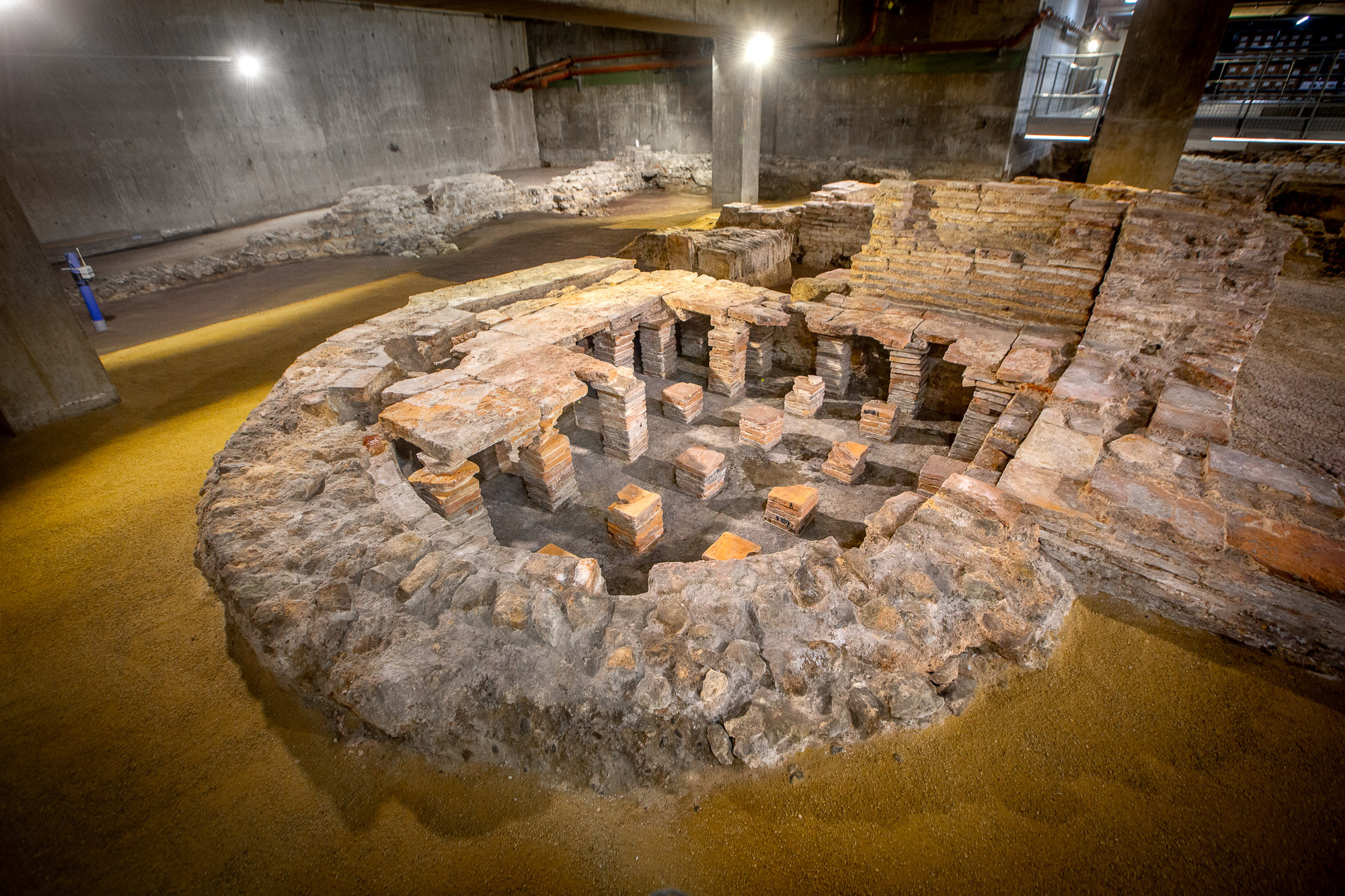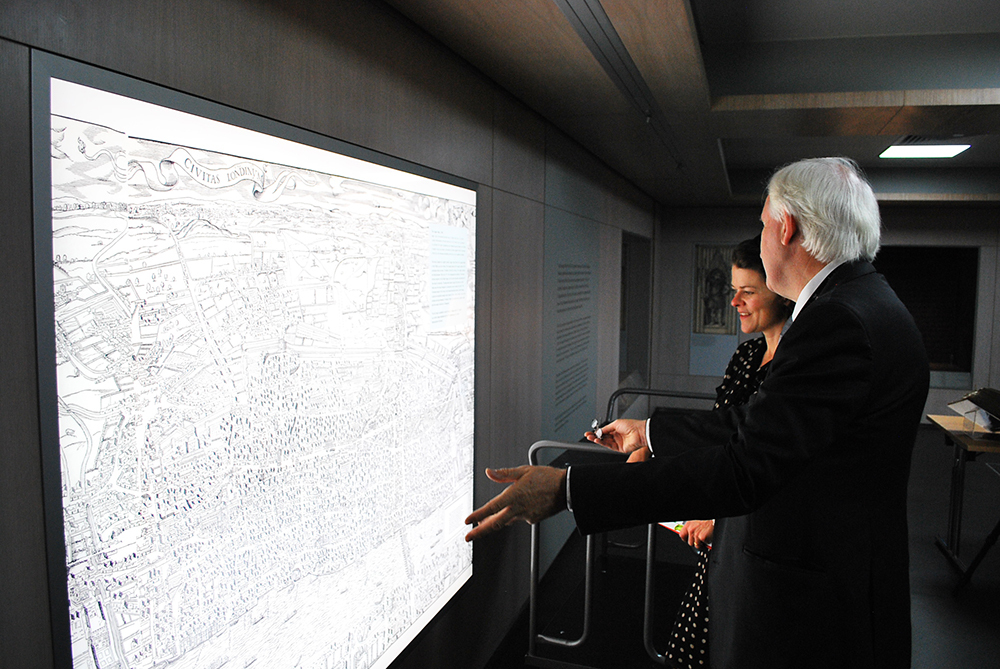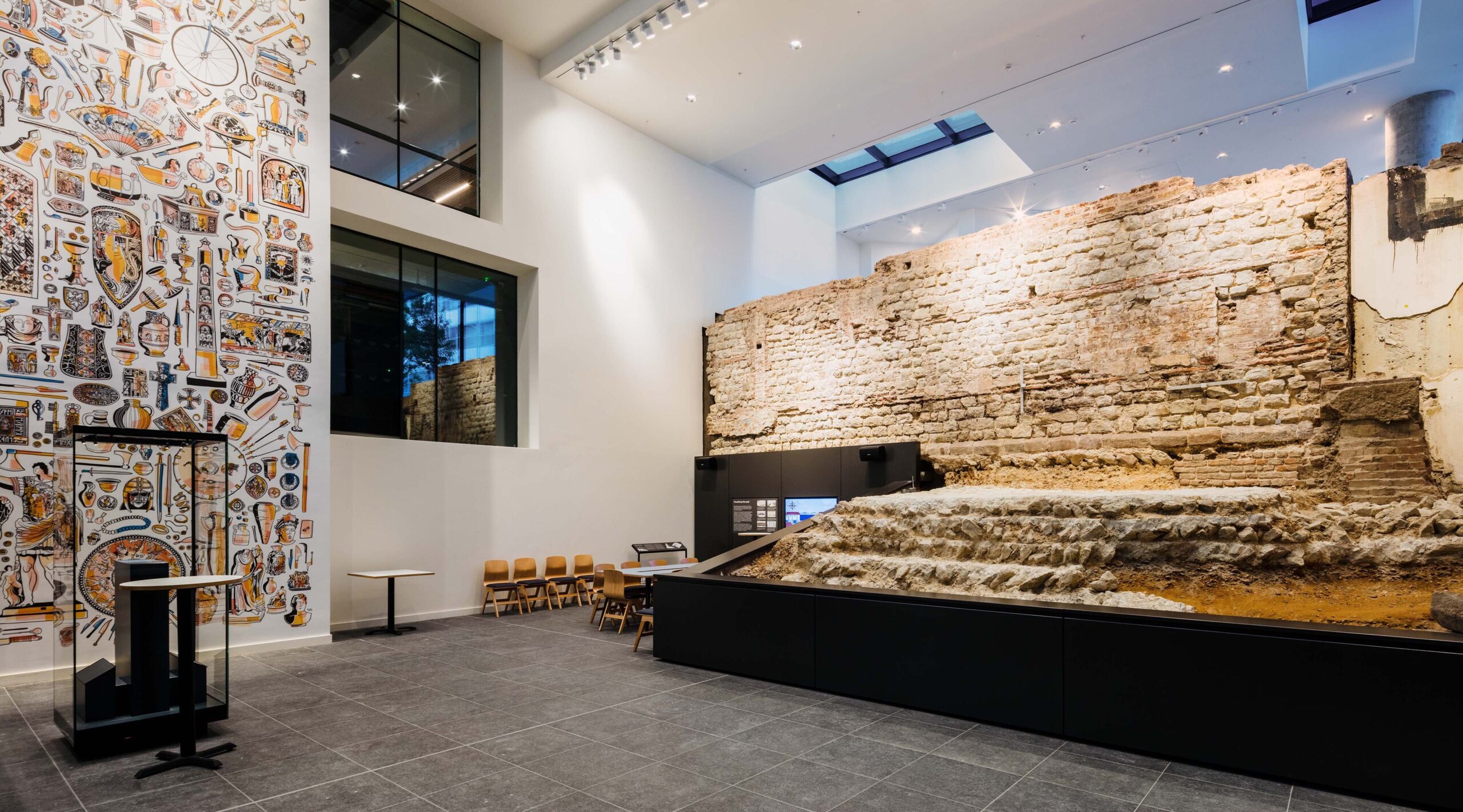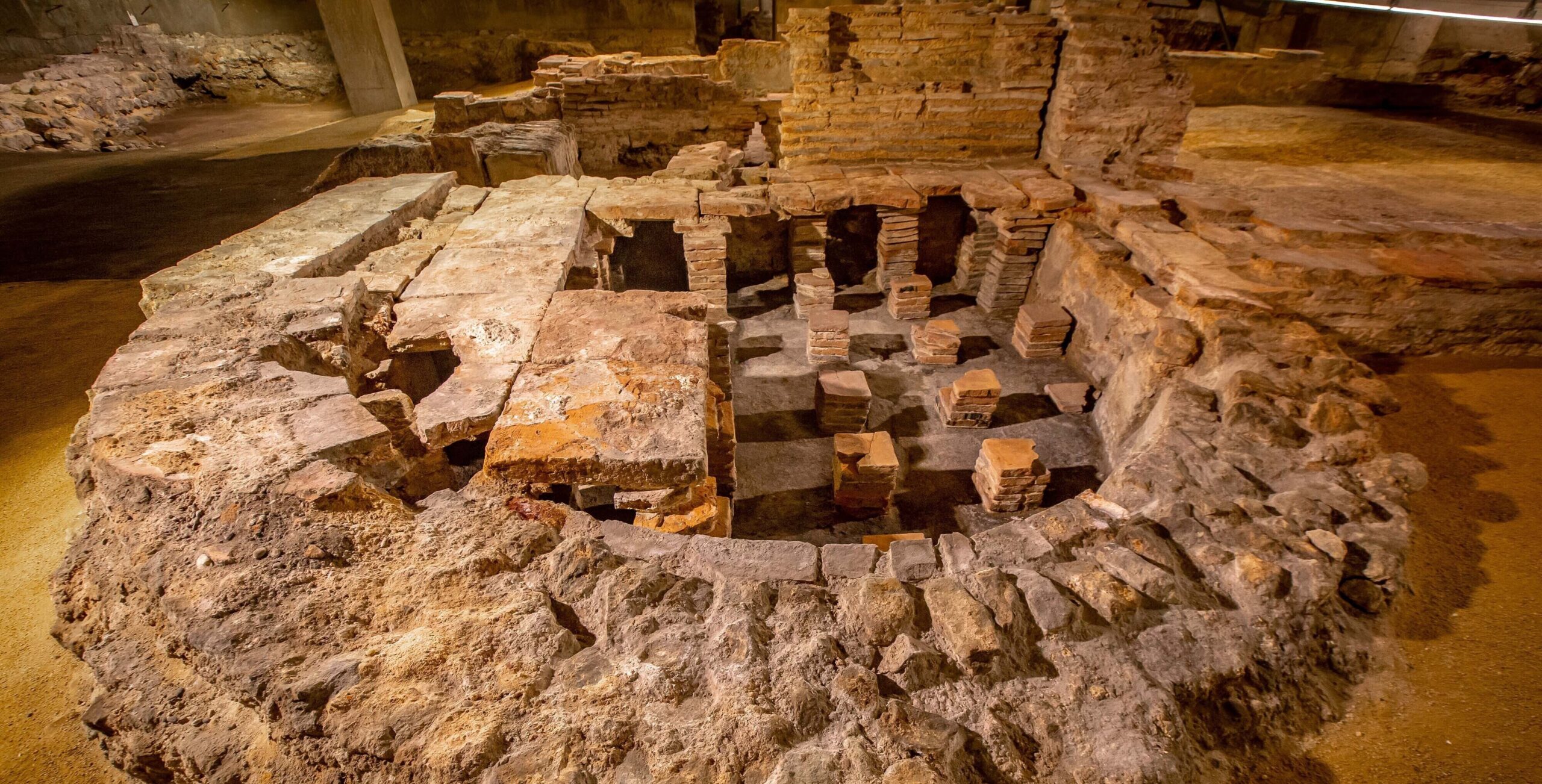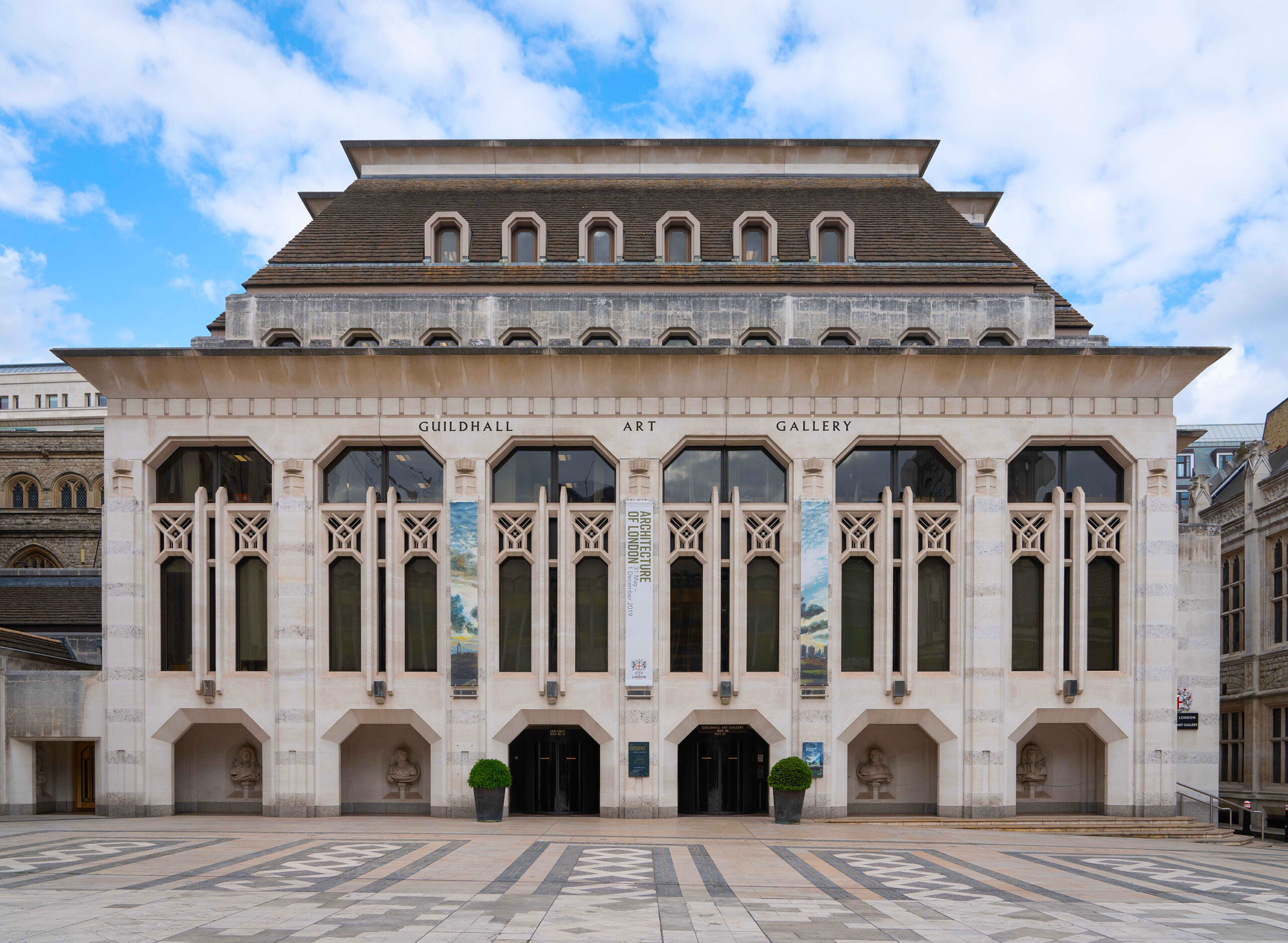
The London's Roman Amphitheatre is an interactive and educational attraction, which allows you to dive into the ancient history of Roman London.
Lost for centuries, the original circular walls of the Amphitheatre were rediscovered by archaeologists working on the site of the new Guildhall Art Gallery building in 1988. Visitors can now step into these well-preserved Roman ruins in which crowds would once have gathered to watch wild animal fights, public executions and gladiatorial combats.
Entry is free and included in Guildhall Art Gallery's admission ticket. For visitor information and accessibility visit the Guildhall Art Gallery page.
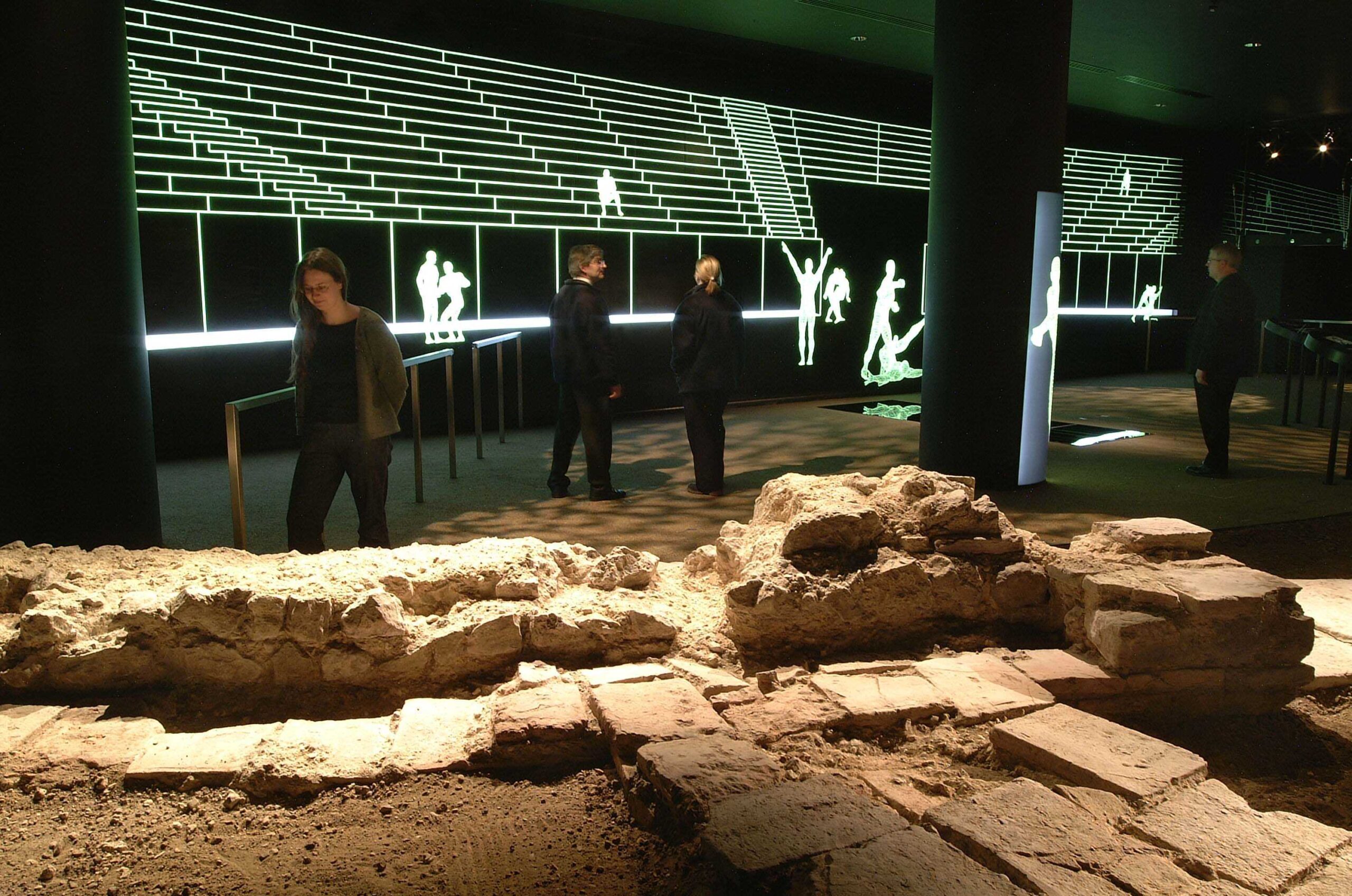
The discovery
In 1988, Museum of London archaeologists made an astonishing discovery that changed the face of Roman London. During an archaeological dig taking place in preparation for the new Art Gallery building project, it was found that the capital's only Roman amphitheatre was located in Guildhall Yard. In 2002, the doors to the amphitheatre opened for the first time in nearly 2,000 years.
The surviving remains
When short stretches of Roman wall were unearthed in Guildhall Yard the site became a protected monument. The City of London Corporation decided to integrate the remains into its proposals for a new Art Gallery and construction work began in 1992, alongside ongoing excavations. The surviving remains include a stretch of the stone entrance tunnel, east gate, and arena walls. They are protected in a controlled environment, 20 feet below the modern pavement, in which they can dry out slowly without damage to the ancient stonework. The original extent of the outer wall is marked by a circle of black paving stones in Guildhall Yard.
The Arena
'The whole place was seething with savage enthusiasm... in the course of the fight some man fell; there was a great roar from the whole mass of spectators...'
London's Roman amphitheatre was a venue for wild animal fights, public executions and gladiatorial combats. Although these violent spectacles were sometimes criticised, particularly by the growing Christian community, they attracted huge audiences. St. Augustine, writing in the 4th century AD, describes the infectious power of the crowd's mood on even the most disapproving visitor, 'he opened his eyes, feeling perfectly prepared to treat whatever he might see with scorn... He saw the blood and he gulped down the savagery... He was no longer the man who had come there but was one of the crowd to which he had come.'
Roman London
'Famous for its wealth of traders and commercial traffic'
This description of London in the 2nd century AD by the Roman historian Tacitus continues to define the City today. Londinium, as it was known, was one of the largest towns in Roman Britain and among the Empire's most significant settlements outside the Mediterranean. It was a hub of international trade; managed by traders who handled the importing of large quantities of luxury goods such as wine, oil, and cloth and the exporting of raw materials and slaves. It began in AD 47 as a settlement on two small hills on the north side of the Thames, currently occupied by St Paul's Cathedral and Leadenhall Market. With easy access to the sea and an advantageous position at the borders rather than the centres of existing tribal groups, Londinium quickly grew to be the most vibrant town in the whole province.
Upcoming guided tours
- 20 April
- 25 May
Visit the Guildhall Art Gallery Shop website to book tickets and find out more information about the tours.
